By David E. Tourgeman, MD, FACOG Board Certified, Reproductive Endocrinology and Infertility
The ABC’s
The ABC’s A fundamental step in understanding how fertility medications work, is to review some basic physiology (see figure). At the beginning of a menstrual cycle, Follicle Stimulating Hormone (FSH) is produced by a part of the brain called the pituitary gland. As the name implies, the primary function of FSH is to stimulate the growth of an ovarian follicle. In addition to containing an egg, the follicle has cells on its periphery which respond to FSH by producing estradiol (E2), a form of estrogen. E2 is a signal to the brain to reduce the amount of FSH it is producing; in this way it limits the amount of FSH that is secreted in any one menstrual cycle. Of the many follicles that can be stimulated to grow in a cycle, typically the one that has the most receptors for FSH flourishes and survives. Once this dominant follicle reaches maturity, Luteinizing Hormone (LH) is then released by the pituitary gland. LH not only provokes the chromosomal maturation of the egg, but also begins the process of ovulation in which the egg is released from the follicle, which will then be captured by the fallopian tube and await sperm for fertilization. Both FSH and LH are also called gonadotropins.
The Basics
Clomiphene citrate (CC) is a tablet taken orally and is available under two trade names: Clomid® and Serophene®. CC works by blocking the effect of E2 on the brain (see figure on back page). As a result, more FSH is produced at the beginning of the cycle and may cause up to several follicles to grow. Because this medicine can cause more than one egg to develop, it increases the odds of a multiple pregnancy to about 8%, usually twins. Although CC causes follicles containing eggs to grow, it does not necessarily cause the eggs to ovulate. While most women respond by producing LH normally, not all do. In this case, an injection of Human Chorionic Gonadotropin (hCG) may be necessary to trigger the egg to be released. hCG is very similar structurally to LH, and “tricks” the egg(s) into ovulating. CC is usually started at a dose of 50 mg (one tablet) per day starting on the third, fourth, or fifth day of the menstrual cycle. This is continued for a total of five days. It is very important to be monitored by ultrasound while taking CC to determine if in fact the medication is effective. If it is not effective, the dose may be increased to 100 or 150mg. If ovulation occurs on a dose of CC, there is usually no benefit to increasing the dose in a subsequent cycle.
The Next Step
If CC is unsuccessful, the next step may include injections, which contain FSH (see figure). Here the addition of FSH directly stimulates the ovaries to produce follicles. Because gonadotropins (FSH and LH) are proteins, they cannot be taken orally as they will be degraded by the enzymes in the stomach and intestines, making them ineffective. Injectable fertility medications have been available for over 30 years, and although all invariably contain FSH, some also contain LH. The earliest form of these medications was derived from menopausal human urine: Pergonal® contains both FSH and LH. Because menopausal women excrete large amounts of FSH and LH in their urine, these medications are manufactured by obtaining and purifying the urine. Once purified, the FSH and LH are extracted and made into a powder for later reconstitution by mixing with saline. Pergonal® has been replaced by Repronex®, and most recently Menopur® which undergoes additional purification procedures. An ampule (or vial) of either medication contains 75 units of FSH and 75 units of LH and is approved for both intramuscular and subcutaneous usage. Bravelle™ contains highly purified urinary-derived FSH (75 units), although each vial contains up to 2% LH. Recently, recombinant technology has been used to make Follistim® and Gonal-F®. Although the FSH in these medications is similar in structure and function to naturally occurring human FSH, it is not derived from human urine. Both medications contain FSH without any LH. Follistim® comes in individual ampules and pen cartridges and Gonal-F® is available in ampules, multi-dose vials, and pen cartridges. The ampules require re-constitution with sterile water, whereas the pen cartridges and multi-dose vials are pre-mixed. Luveris®, recombinant LH, has been recently introduced and may help the physician tailor particular medication needs. Gonadotropins are used during “stimulation” to produce more than one follicle to grow. This is desired in intrauterine insemination (IUI) and in-vitro fertilization (IVF) cycles. Because gonadotropins can cause many follicles to develop, careful monitoring with serial blood tests and ultrasounds must be performed multiple times during this stimulation period, which may last from 7 to 12 days. Generally, the gonadotropins are administered once or twice daily during the stimulation. The dosage of gonadotropins used to stimulate follicle development varies dependent on many factors, and must be personalized for each patient. Some of the dictating factors include age, height and weight, whether the patient will have an IUI or IVF, and results of prior stimulations. Gonadotropins are stopped when a certain number of mature follicles are achieved and/or when the E2 levels reach a certain level. hCG is then injected, and approximately 36 hours later either an IUI is performed or an egg retrieval is scheduled for IVF. Aside from generic hCG, other brands of hCG available are Pregnyl®, Novarel™, and Ovidrel®. Pregnyl® and Novarel™ are urinary-derived hCG preparations, while Ovidrel® is currently the only recombinant hCG available.
Before Starting Gonadotropins
Premature ovulation of the follicles can occur during stimulation with gonadotropins, and it is for this reason that your physician will prescribe either a Gonadotropin Releasing Hormone (GnRH) agonist or GnRH antagonist. This is particularly important during IVF, where the eggs must be harvested prior to ovulation. Lupron® and Synarel® are GnRH agonists, while Cetrotide® and Antagon® are GnRH antagonists. The main action of these medications is to stop the LH production from the brain. The agonists initially provoke the release of FSH and LH from the pituitary gland, however after 7 to 10 days the agonists subsequently stop FSH and LH release (down-regulation). Lupron® is a subcutaneous injection that is administered daily, while Synarel® is a nasal spray that is administered twice daily. The GnRH antagonists differ in that they stop FSH and LH release within hours of the injection. Generally, you will visit your physician on the third day of your menstrual cycle, a birth control pill will be started and then the agonist will be added to achieve full downregulation of your ovaries. Alternatively, the agonist may be started just after ovulation in the mid-luteal phase of your cycle (approximately a week after ovulation). Once down-regulation is achieved, gonadotropins are started. On the other hand, the GnRH antagonists, Cetrotide® and Antagon® are started when the largest follicle has reached about 14 mm in diameter. This often falls on the fifth through seventh day of stimulation. While Lupron® and Synarel® are not approved by the FDA for use in infertile women, both Cetrotide® and Antagon® are approved.
Side Effects and Risks
Because down-regulation includes the cessation of FSH production (and thus estrogen production), some of the primary side effects include menopausal symptoms (e.g. hot flashes, headaches, and irritability). Fortunately, this is short-lived and resolves generally after the first few days of gonadotropins.
Risks of the stimulatory drugs (FSH) include multiple follicle development and as a result multiple pregnancies (twins, triplets, etc.) may occur. This occurs in 20 to 30% of cycles in which gonadotropins are used. Ovarian hyperstimulation syndrome is the accumulation of fluid around the ovaries that may cause the patient to feel bloated and become dehydrated, and also occurs with gonadotropin use. Other rare complications include twisting of the ovary on its blood supply which may result in pain and vomiting. Ectopic pregnancies (implantation outside of the uterus) are also reported more in IVF (about 2 to 5% of the time). Finally, since some fertility drugs are derived from human urine, the remote possibility of disease transmission exists.
Once Pregnancy is Established
Progesterone (P) is a hormone produced by the ovaries after ovulation and its primary role is to maintain the uterine lining and maintain a pregnancy. When pregnancy is achieved by IUI or IVF with injectable gonadotropins, the ovaries ability to produce sufficient P may be limited, and as a result, it will be required to take supplemental P. P administration is usually started after ovulation (in IUI cycles) or egg retrieval (in IVF cycles) and is usually continued through the end of the first trimester of pregnancy after which the placenta takes over the production of progesterone. There are many forms available including injectable Progesterone-in-oil (most commonly prescribed), vaginal suppositories and gels (Crinone® and Prochieve™), sublingual lozenges, and orally administered Prometrium®. All contain micronized progesterone which is essentially the same hormone that is normally produced by the ovaries. Progesterone-in-oil results in predictable blood progesterone levels. It has
been used for the longest time by IVF centers, however, it is not FDA approved for usage in pregnancy. One obvious disadvantage is the inconvenience of an intramuscular injection, that may be given once or twice daily. Progesterone vaginal suppositories are not commercially available from pharmaceutical companies, instead they are made by pharmacists, and therefore may vary in consistency. However, vaginal administration is perhaps the optimal route of administration as there is direct delivery of the medication to the target organ: the uterus. Suppositories are not FDA approved for usage in pregnancy. Commercially available Crinone® and Prochieve™ are vaginal gels that come in pre-filled applicators, and are generally given once per day. Crinone® and Prochieve™ are approved by the FDA for usage during the first trimester of pregnancy. Lozenges are not available commercially, but can be made by some pharmacies, however, their use is less well studied. Prometrium® is orally administered progesterone. Because it is rapidly metabolized by stomach and intestinal enzymes, it must be dosed several times a day. Side effects may include tiredness and irritability. Prometrium® is not FDA approved for usage in pregnancy.
Summary
Although there are a vast number of fertility medications and protocols, the goal in most cases is to take advantage of the fact that there are many eggs available for stimulation in any one cycle. By increasing the amount of FSH, either through CC or FSH injections, multiple follicles are stimulated to grow. Once they have grown to a mature size, either LH or hCG will aid in the maturation process, by starting the chromosomal preparation for fertilization. In the case of IUI, the eggs will ovulate normally, while with IVF the eggs are harvested and fertilization occurs in the laboratory. In cases where injectable FSH was used and once ovulation/embryo transfer have occurred, P will be added to maintain the pregnancy.

